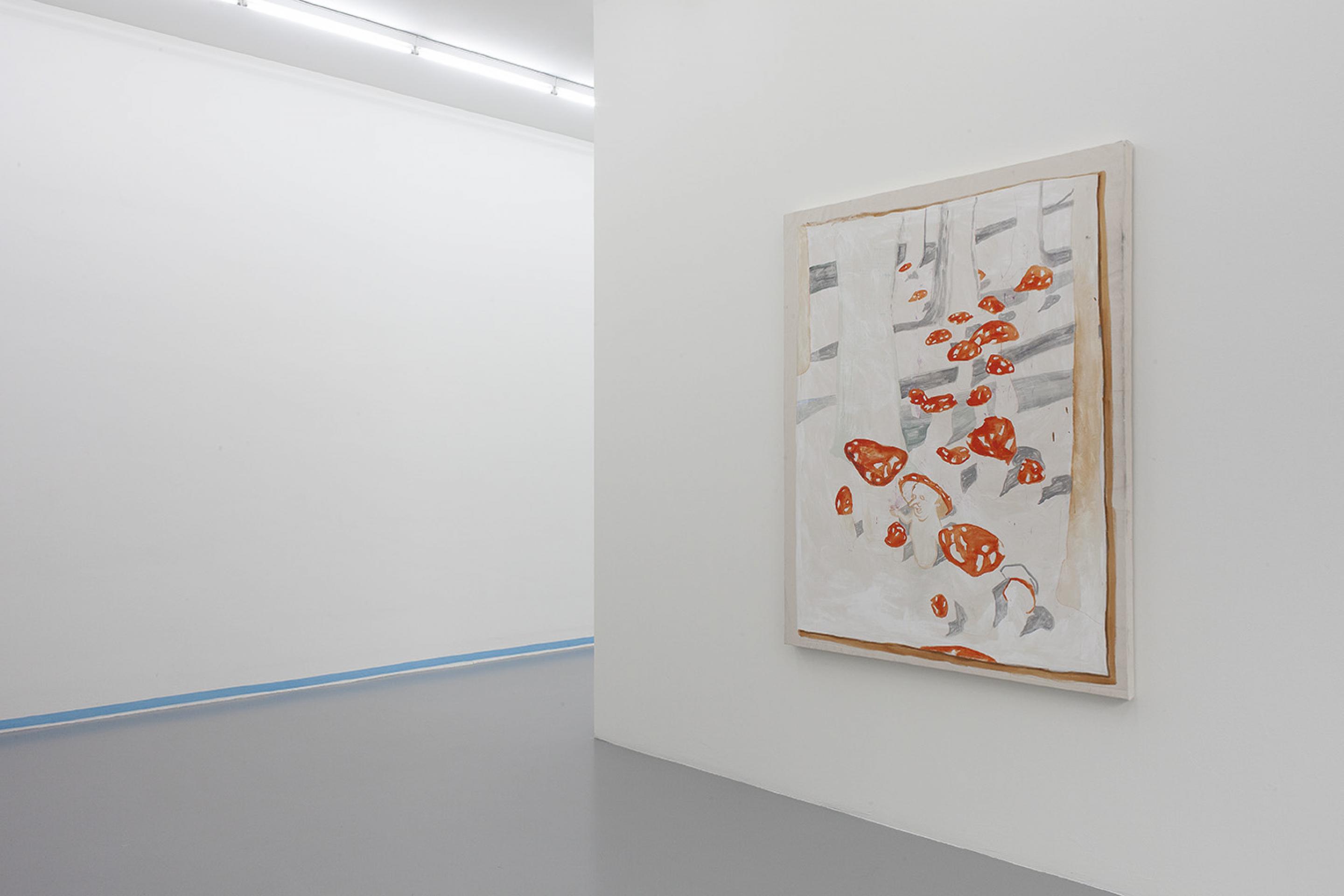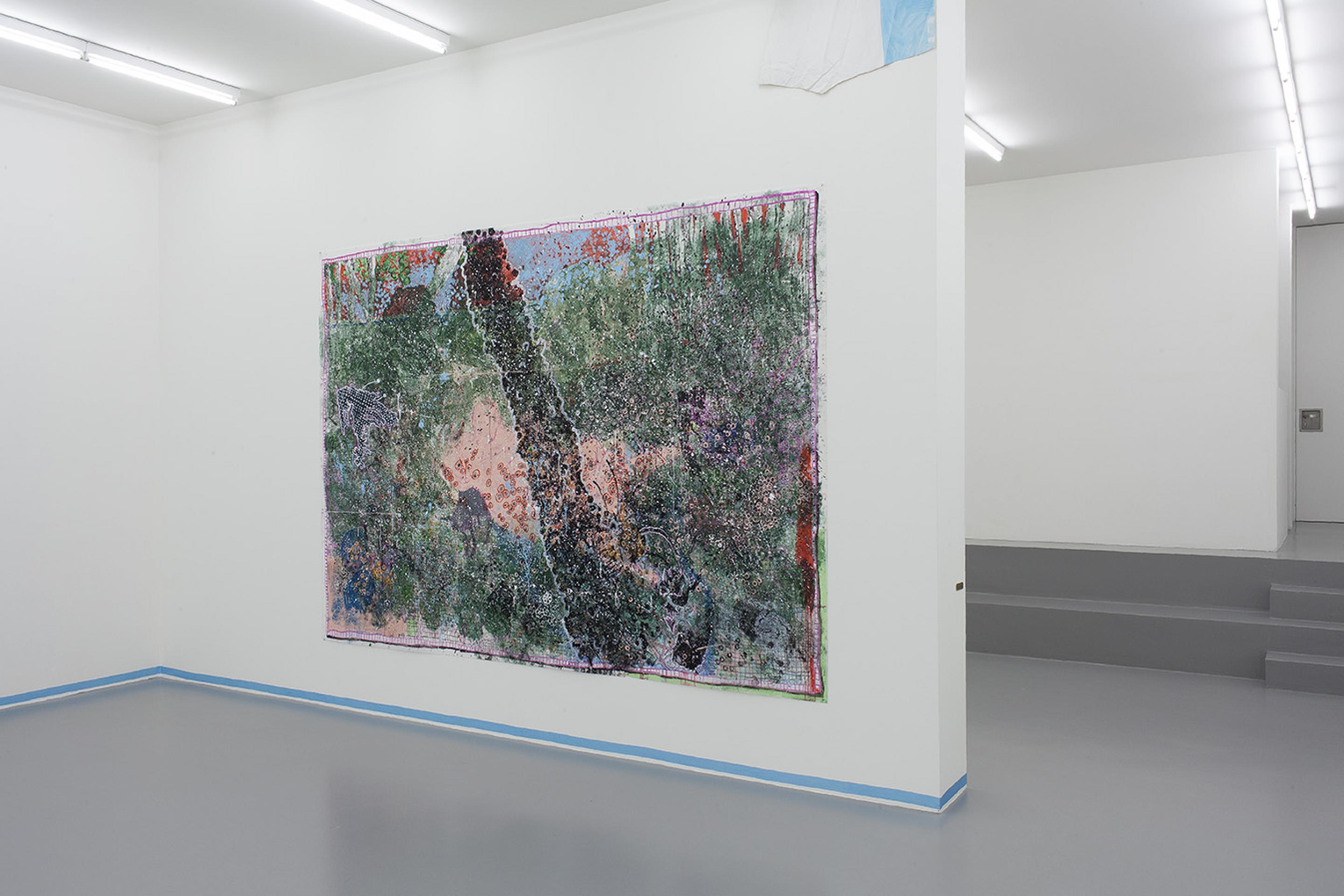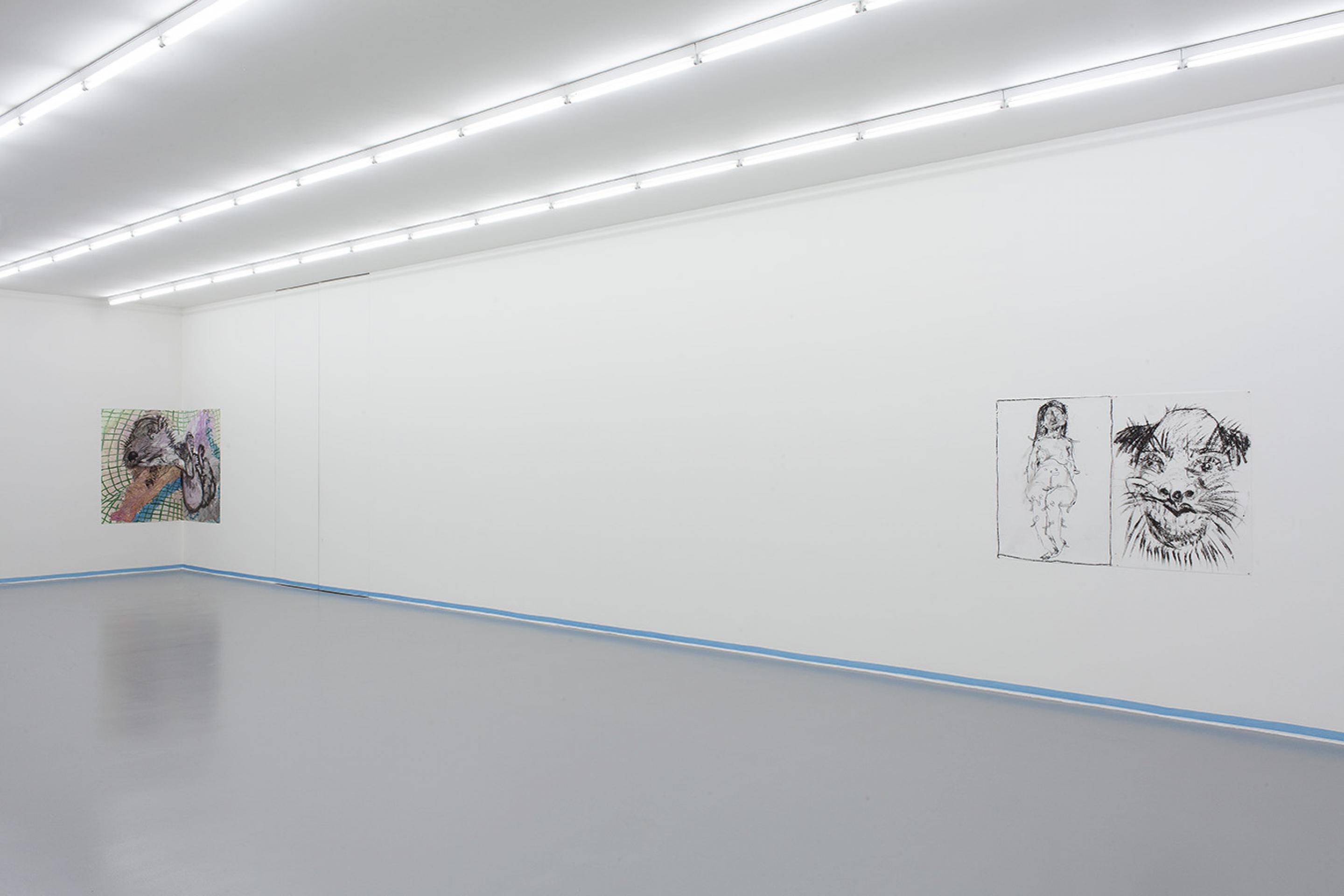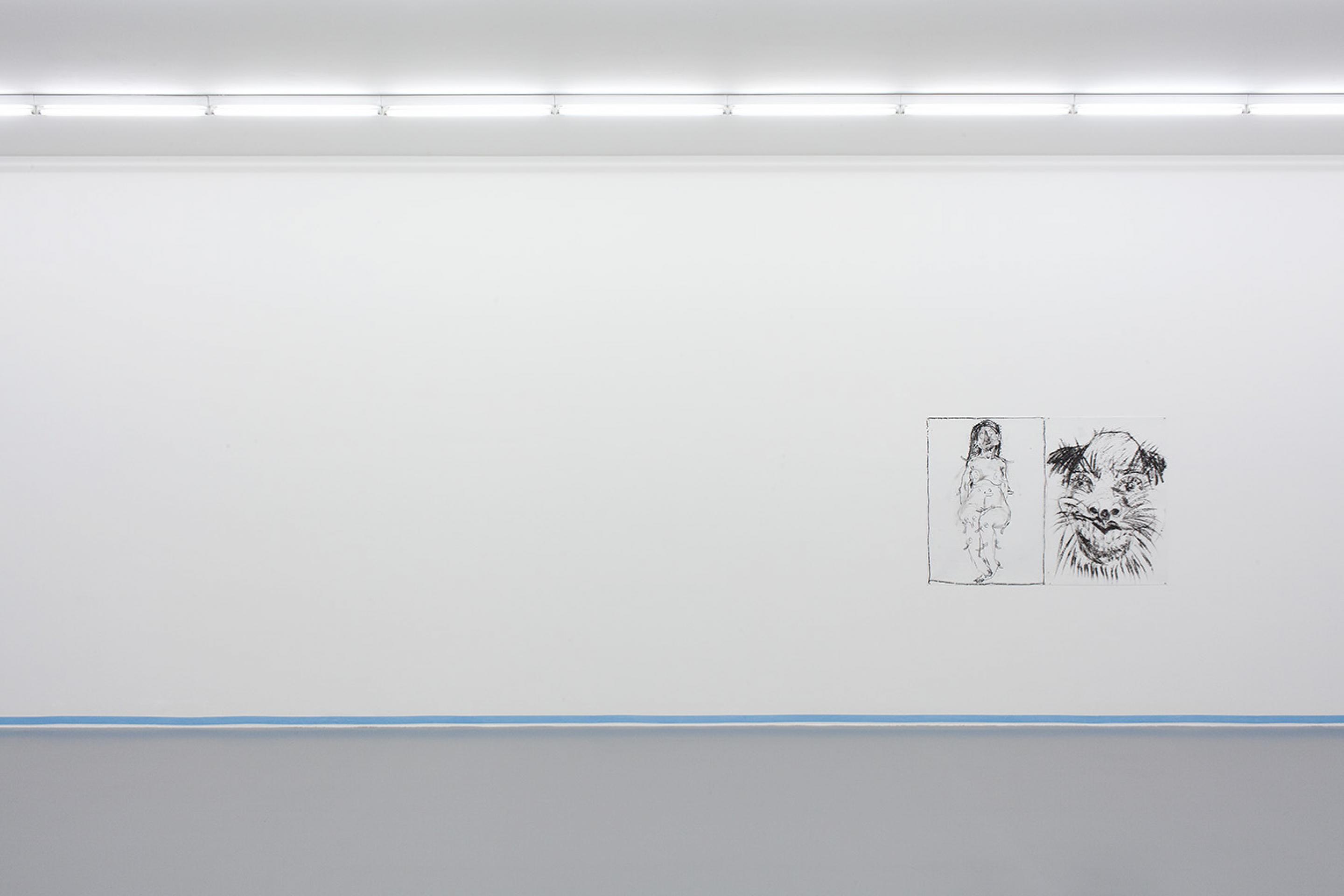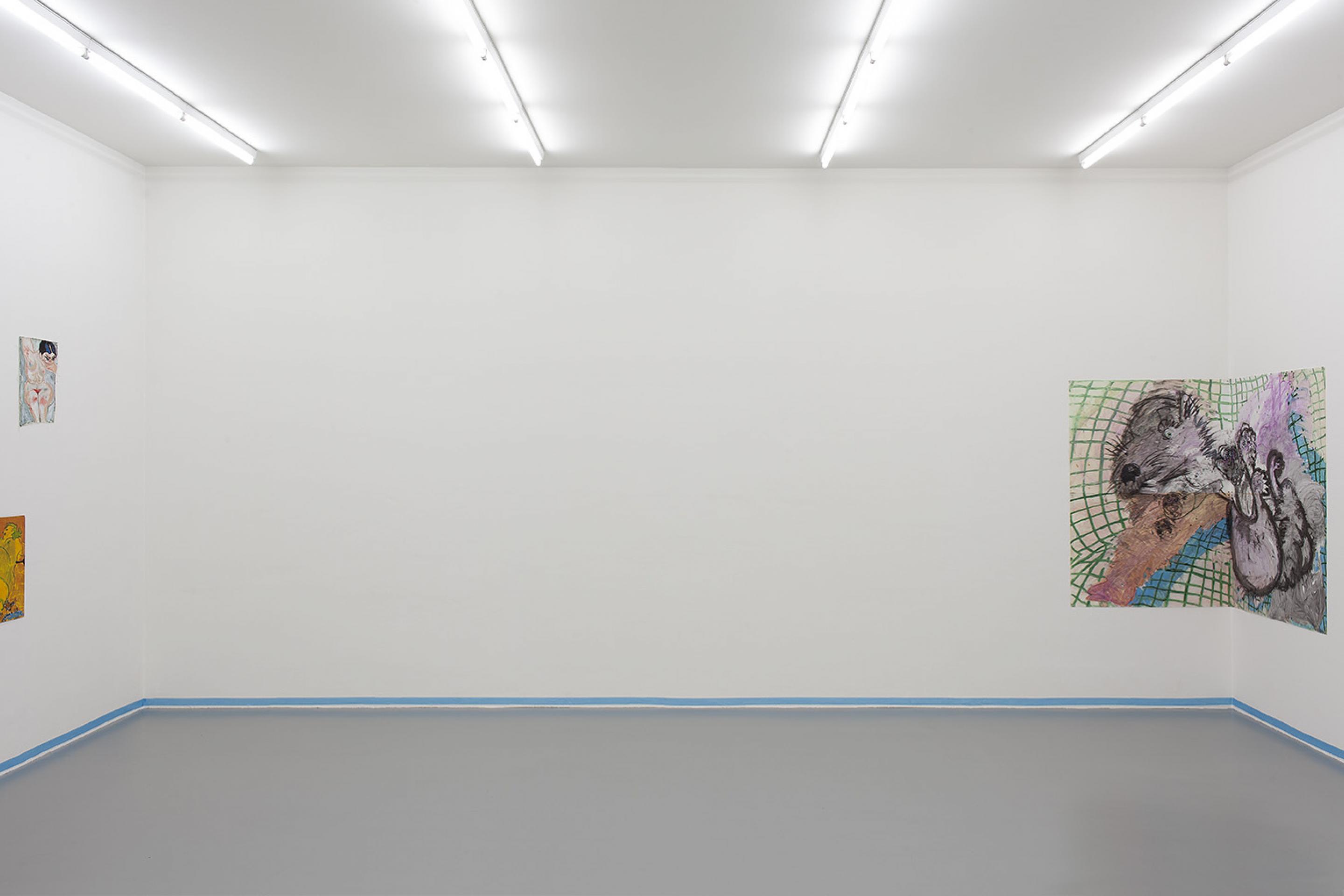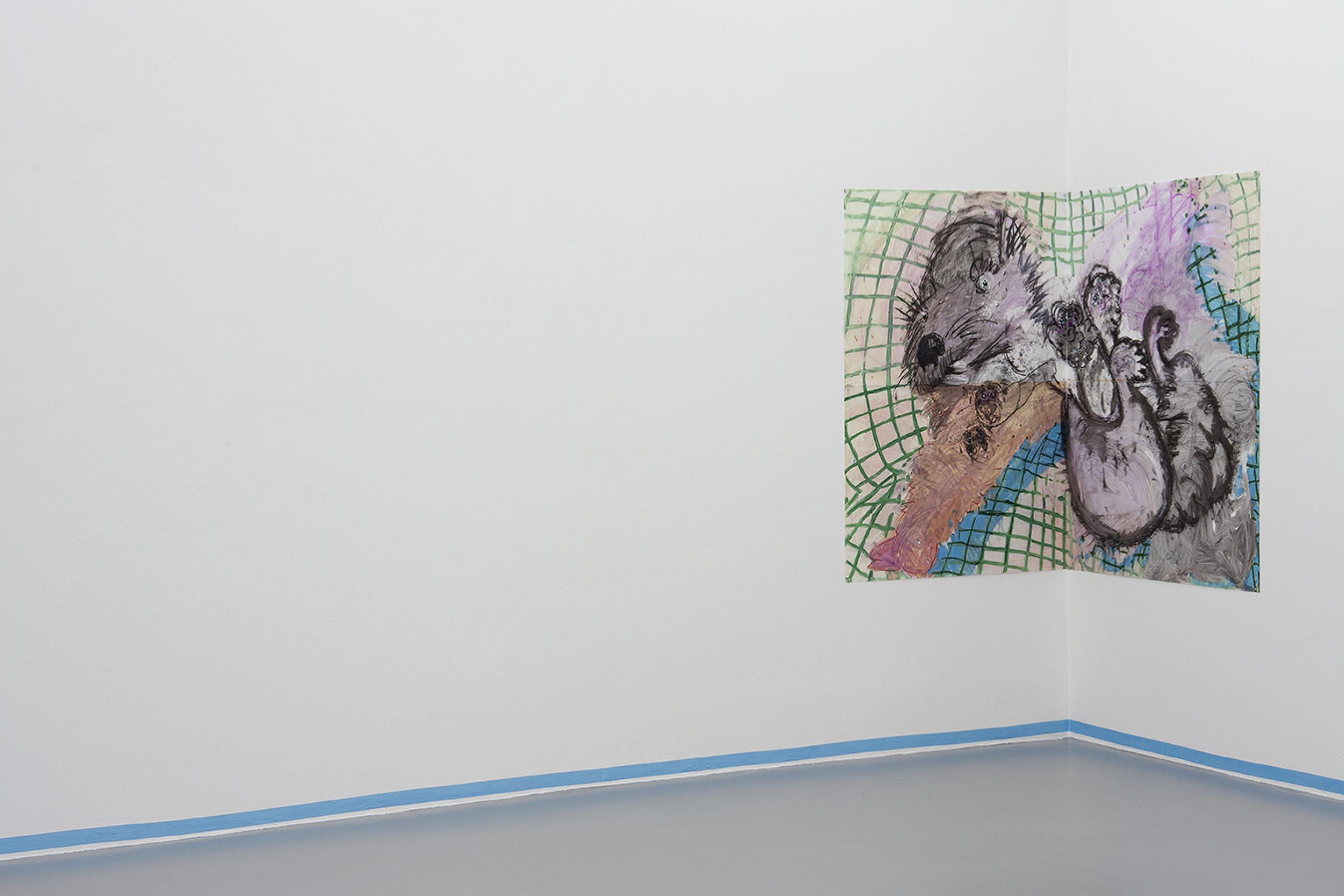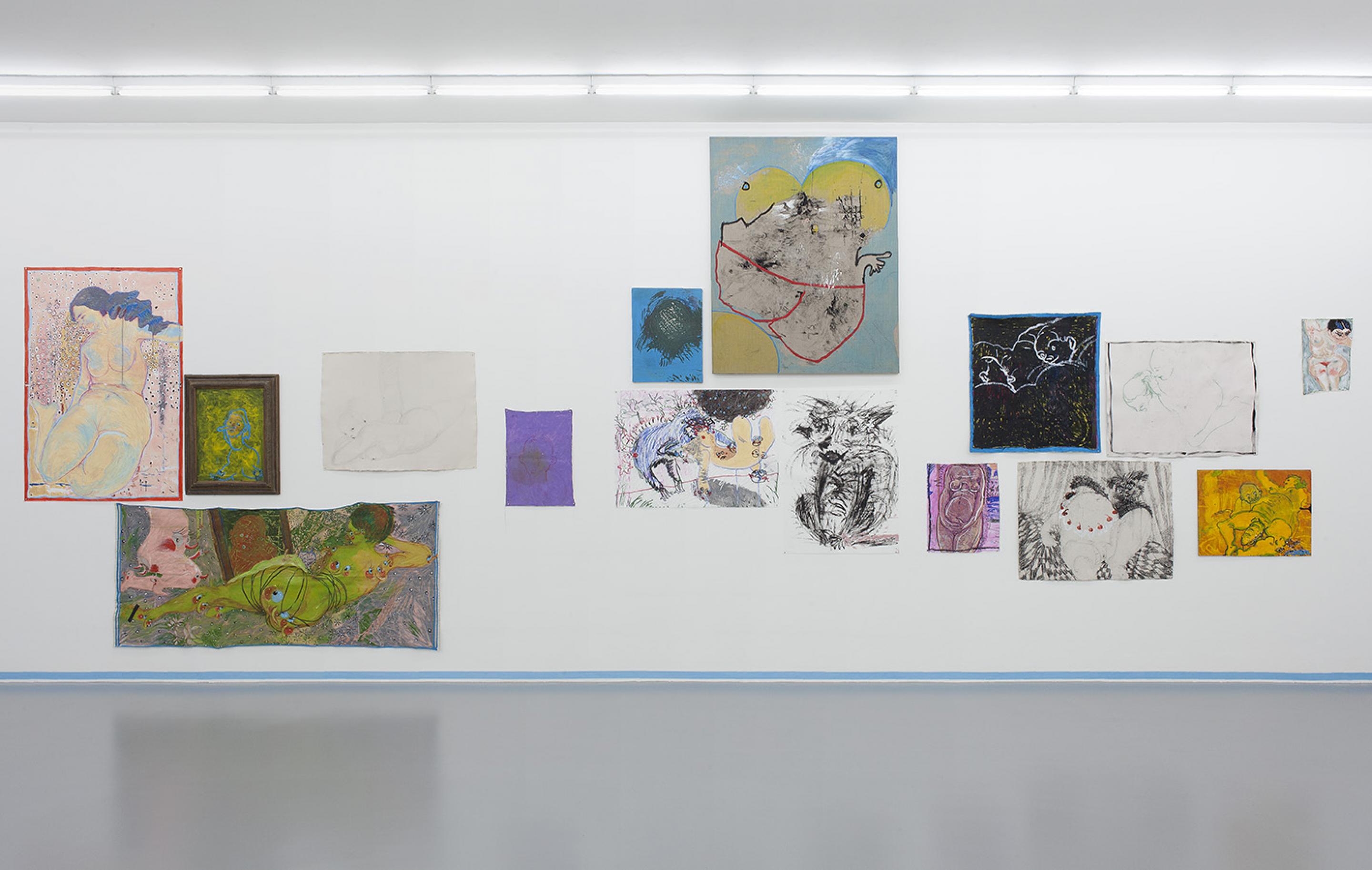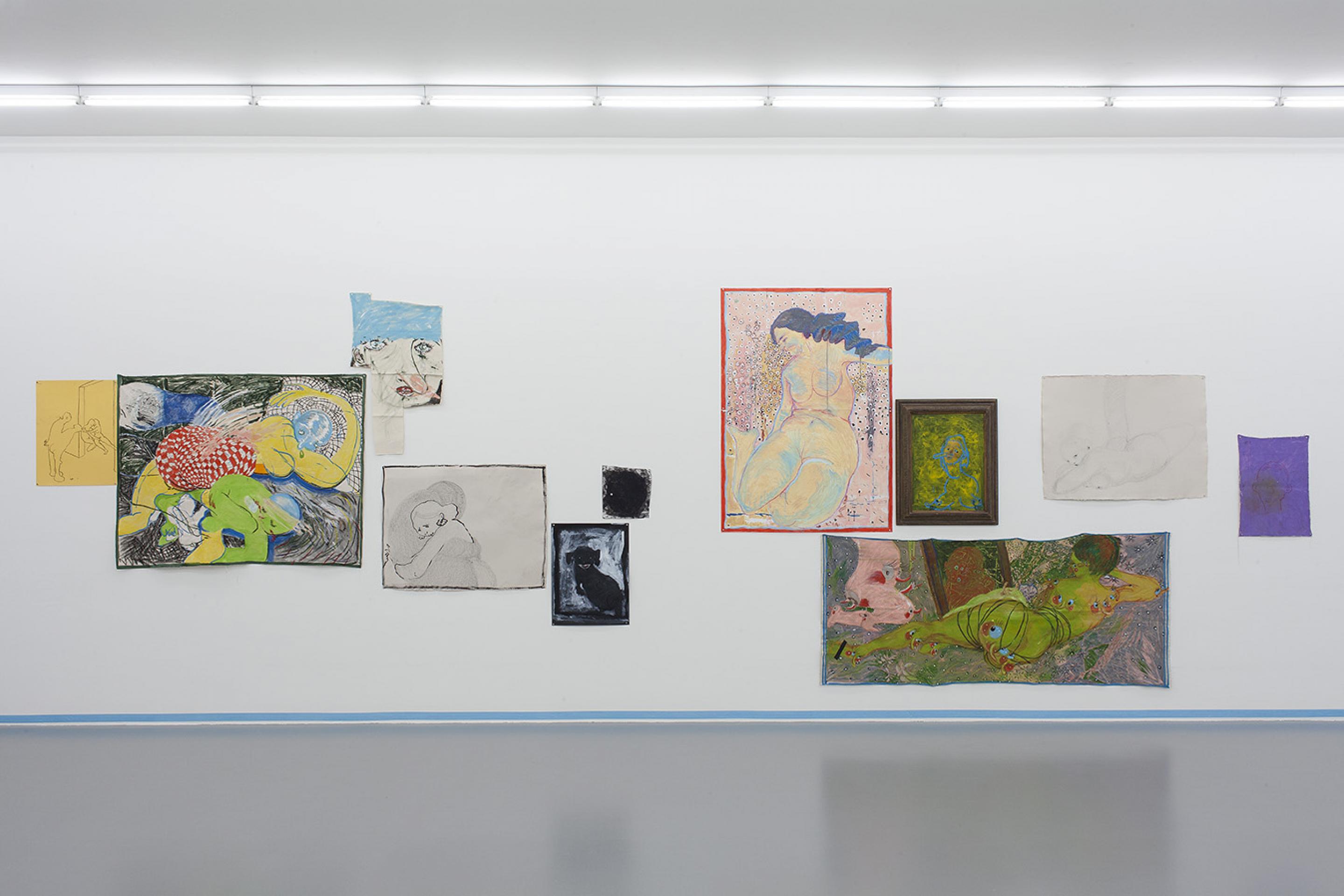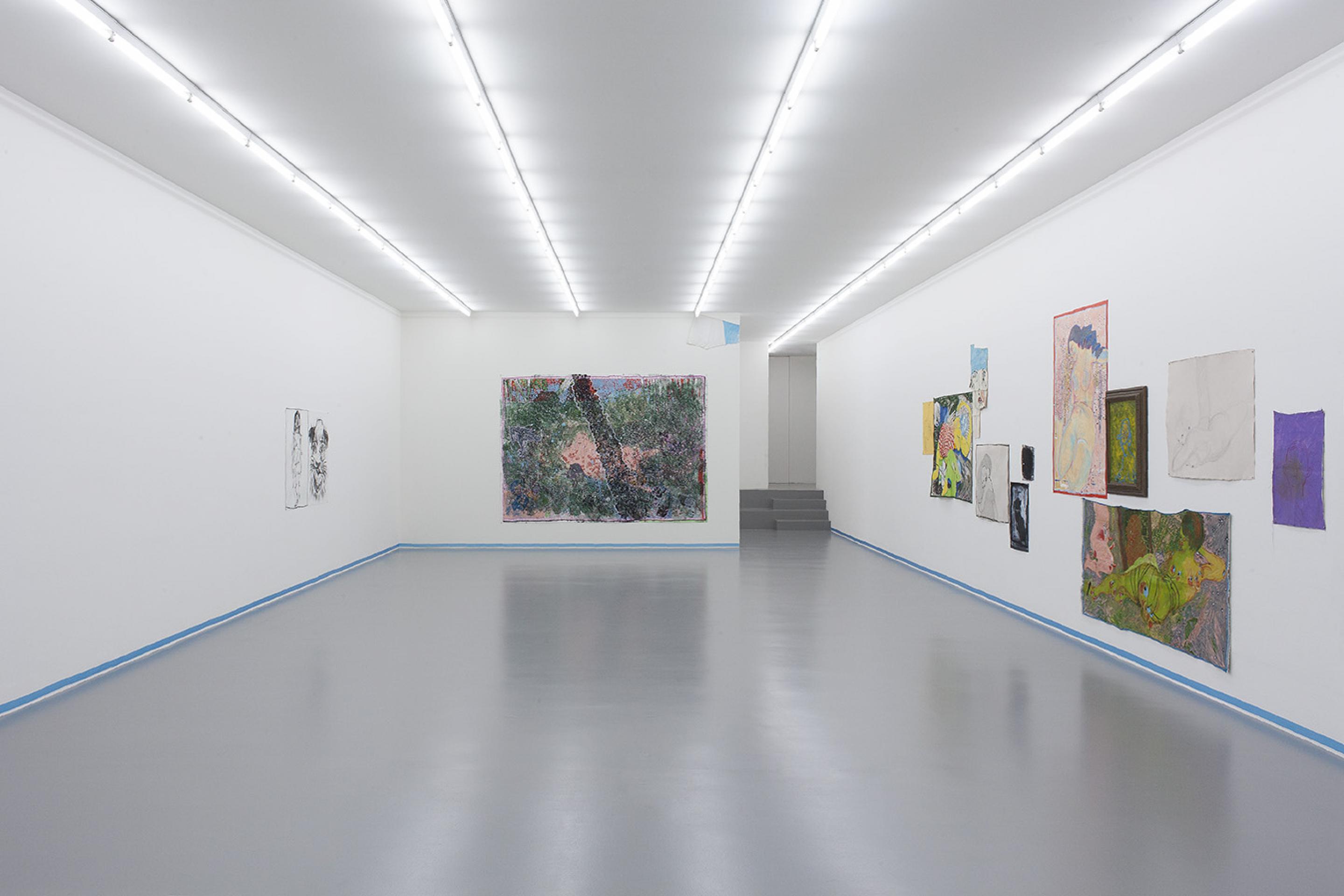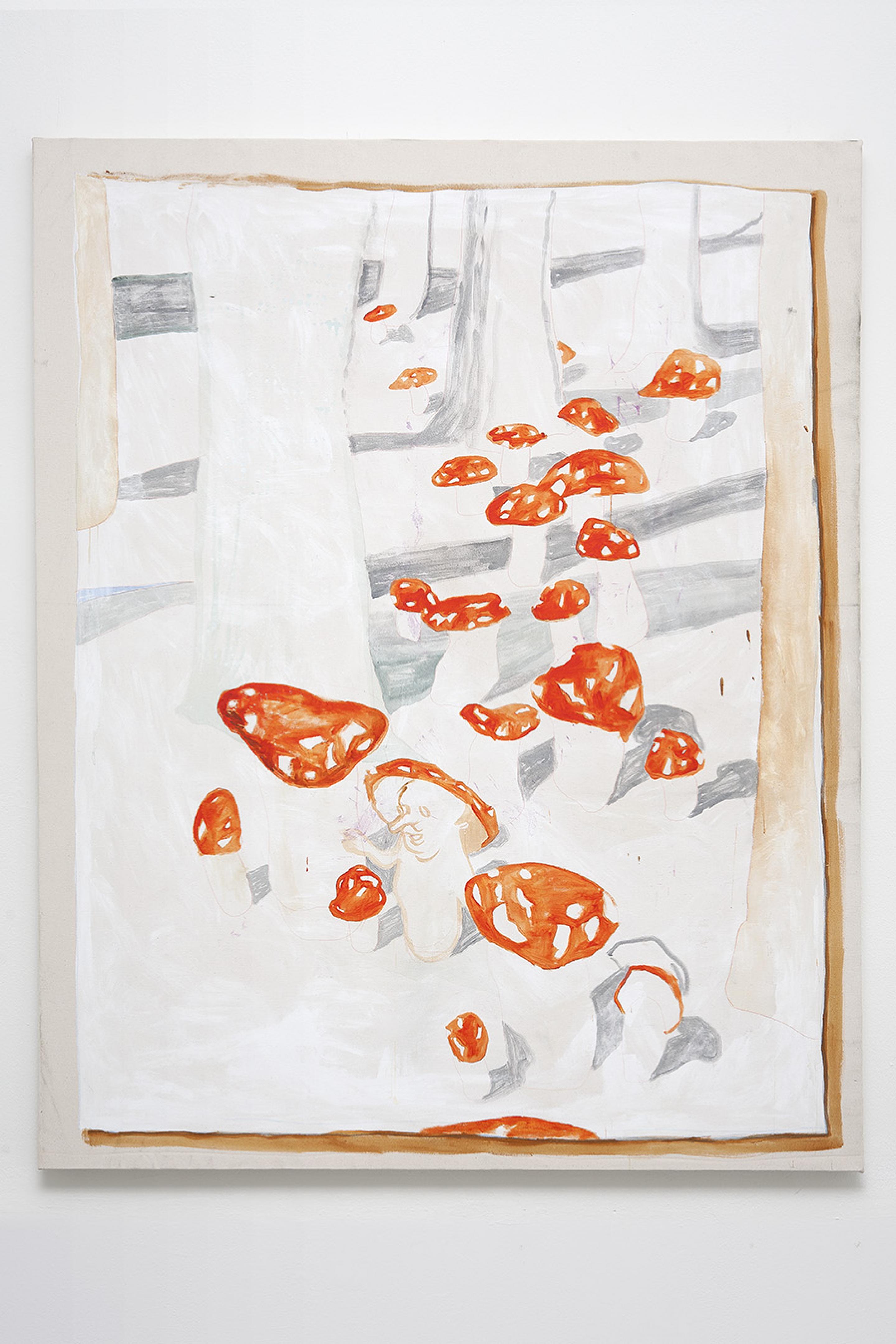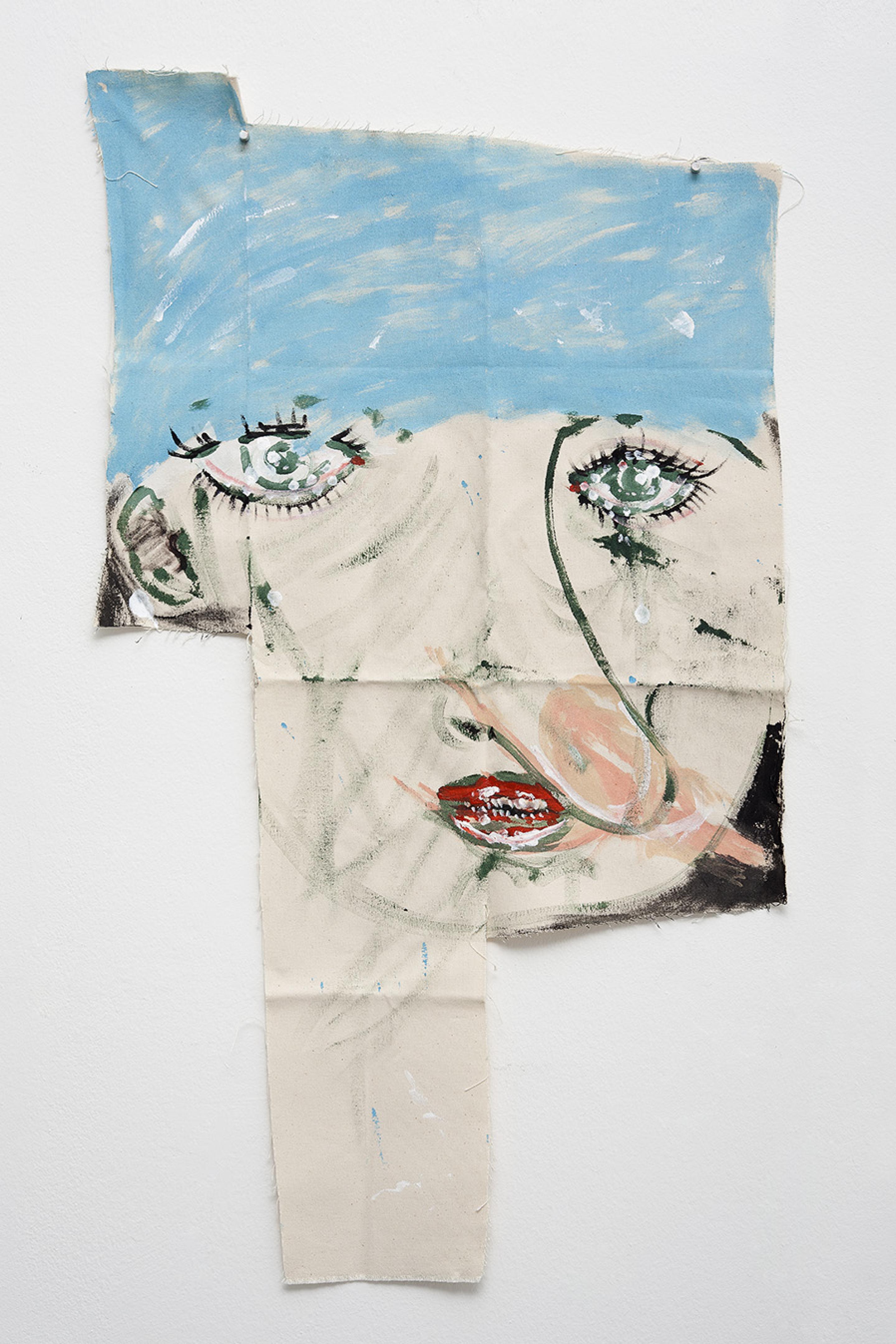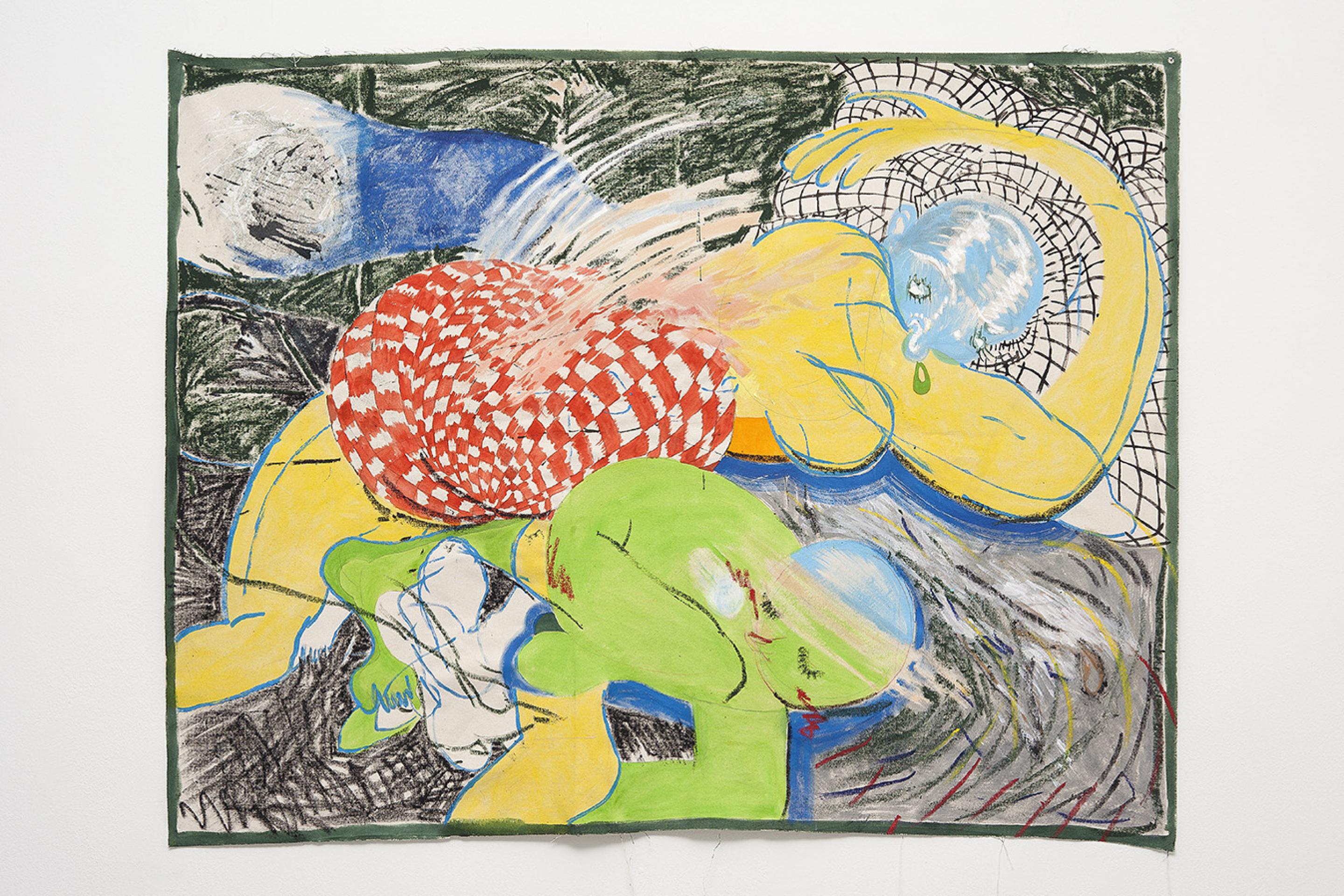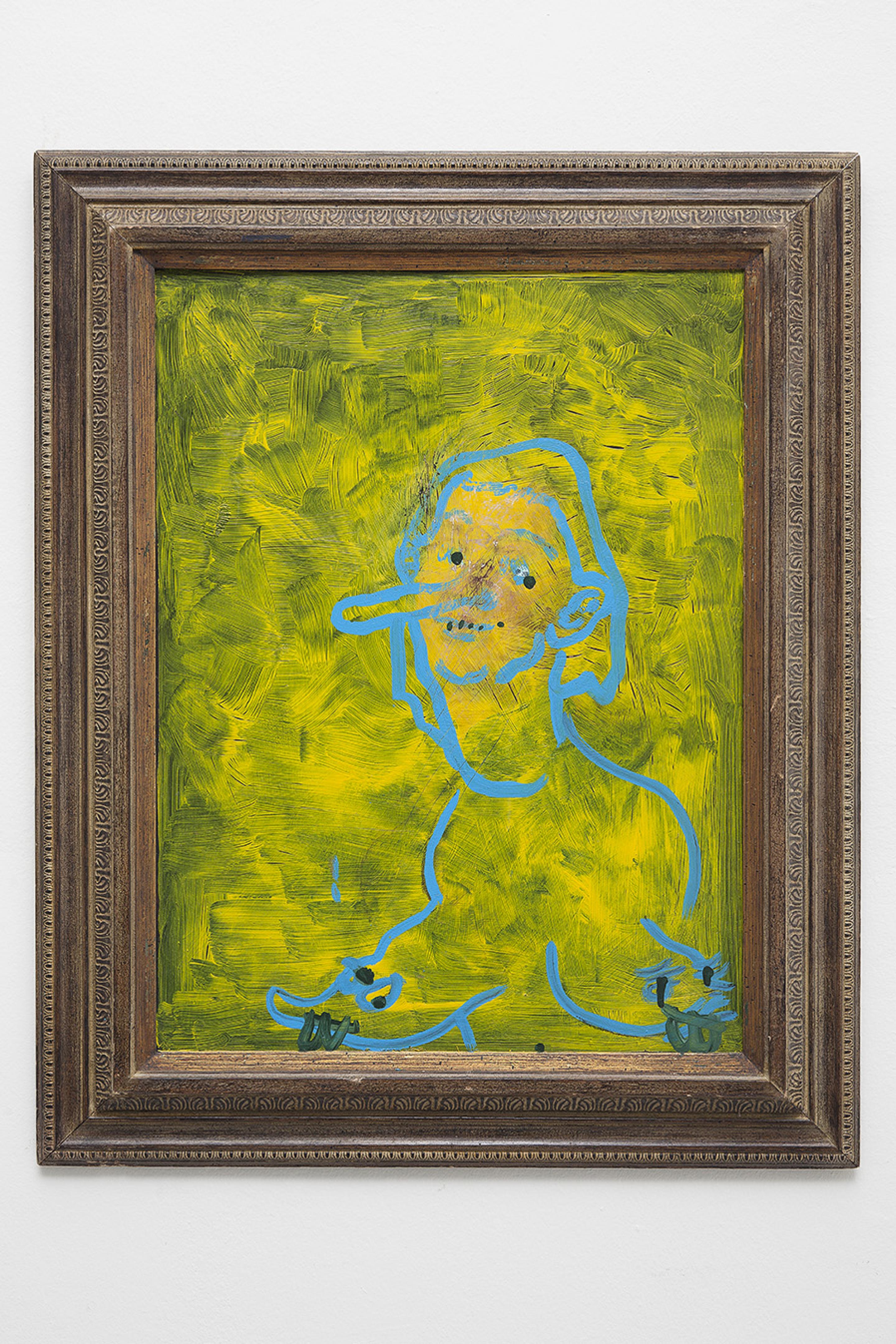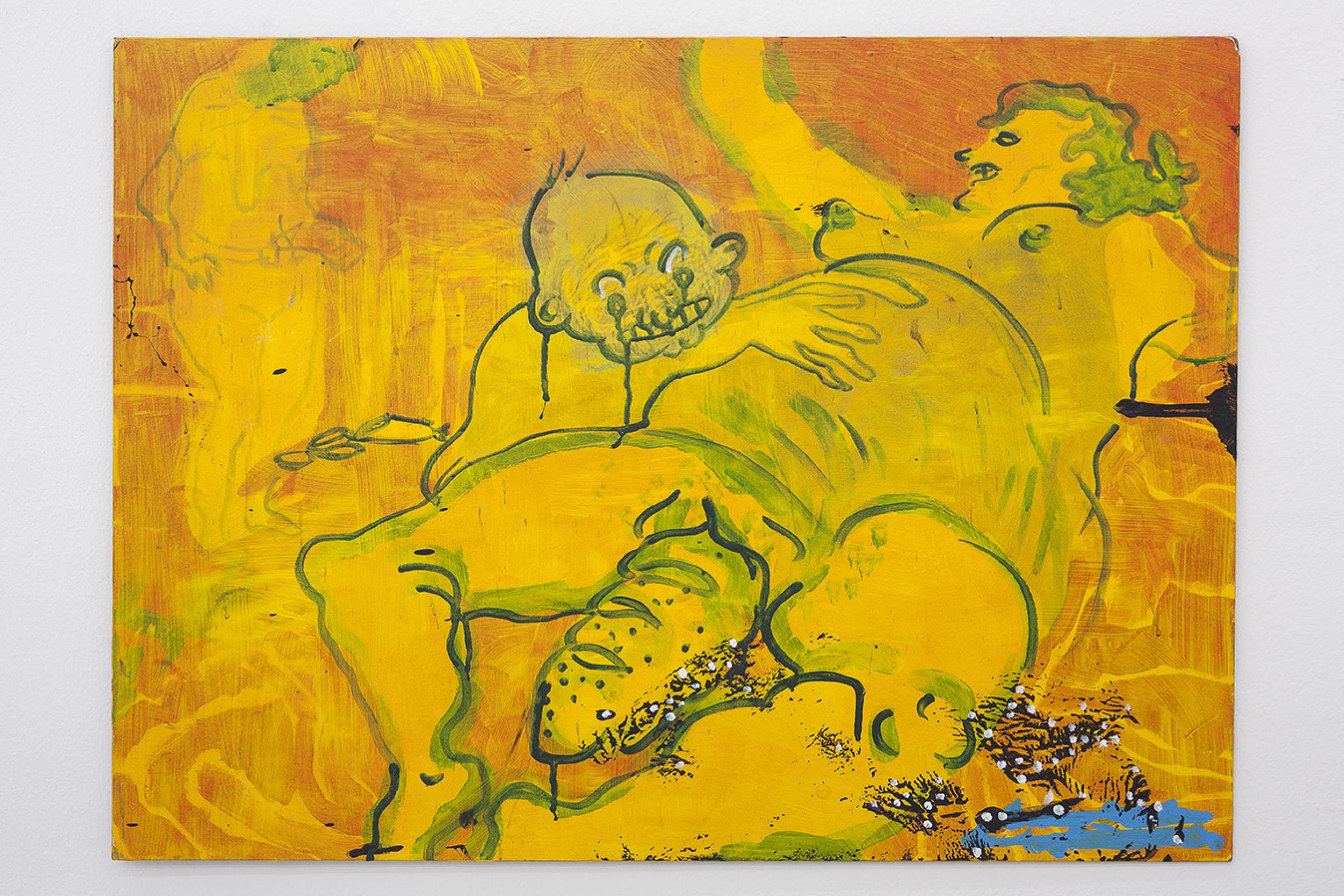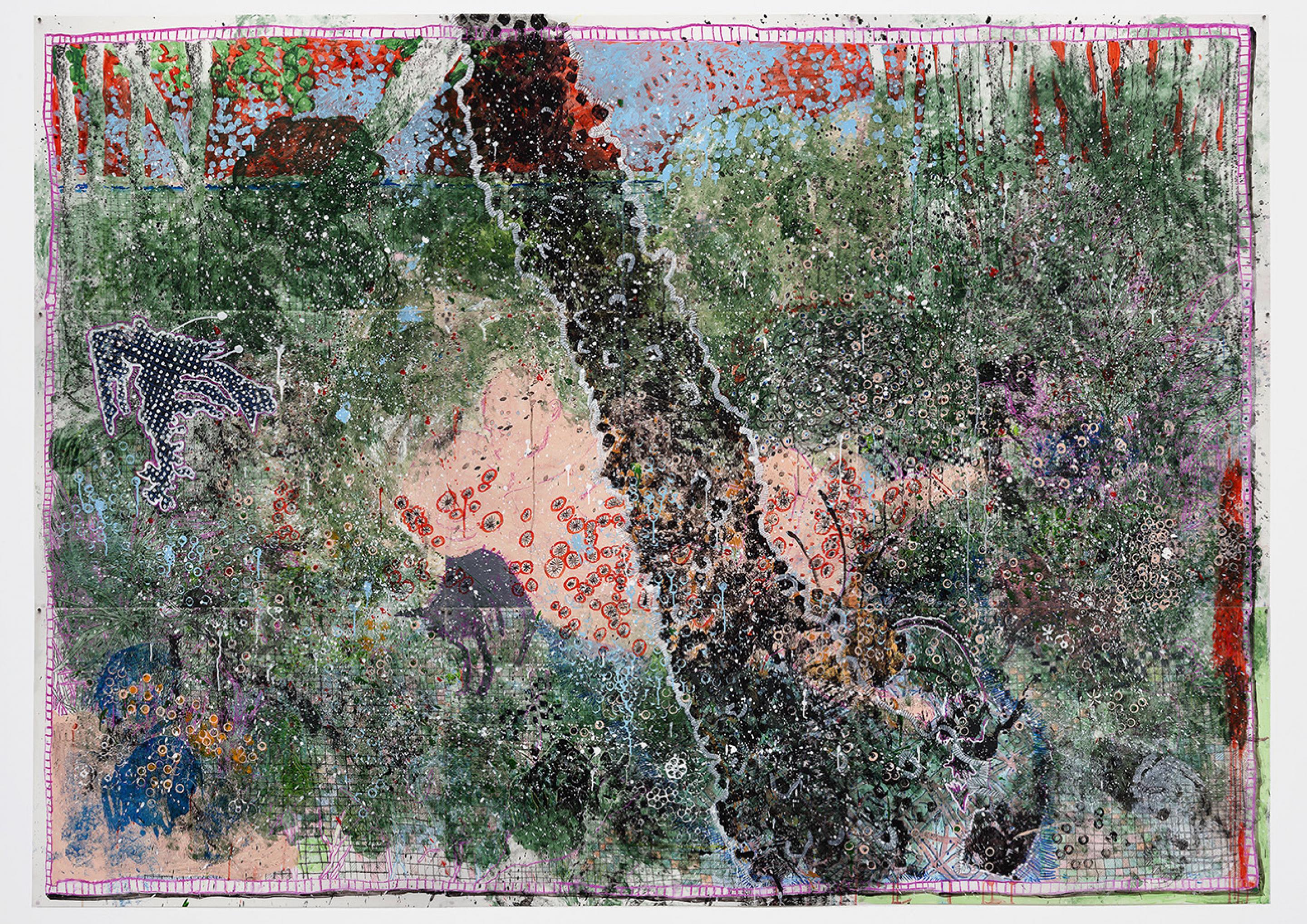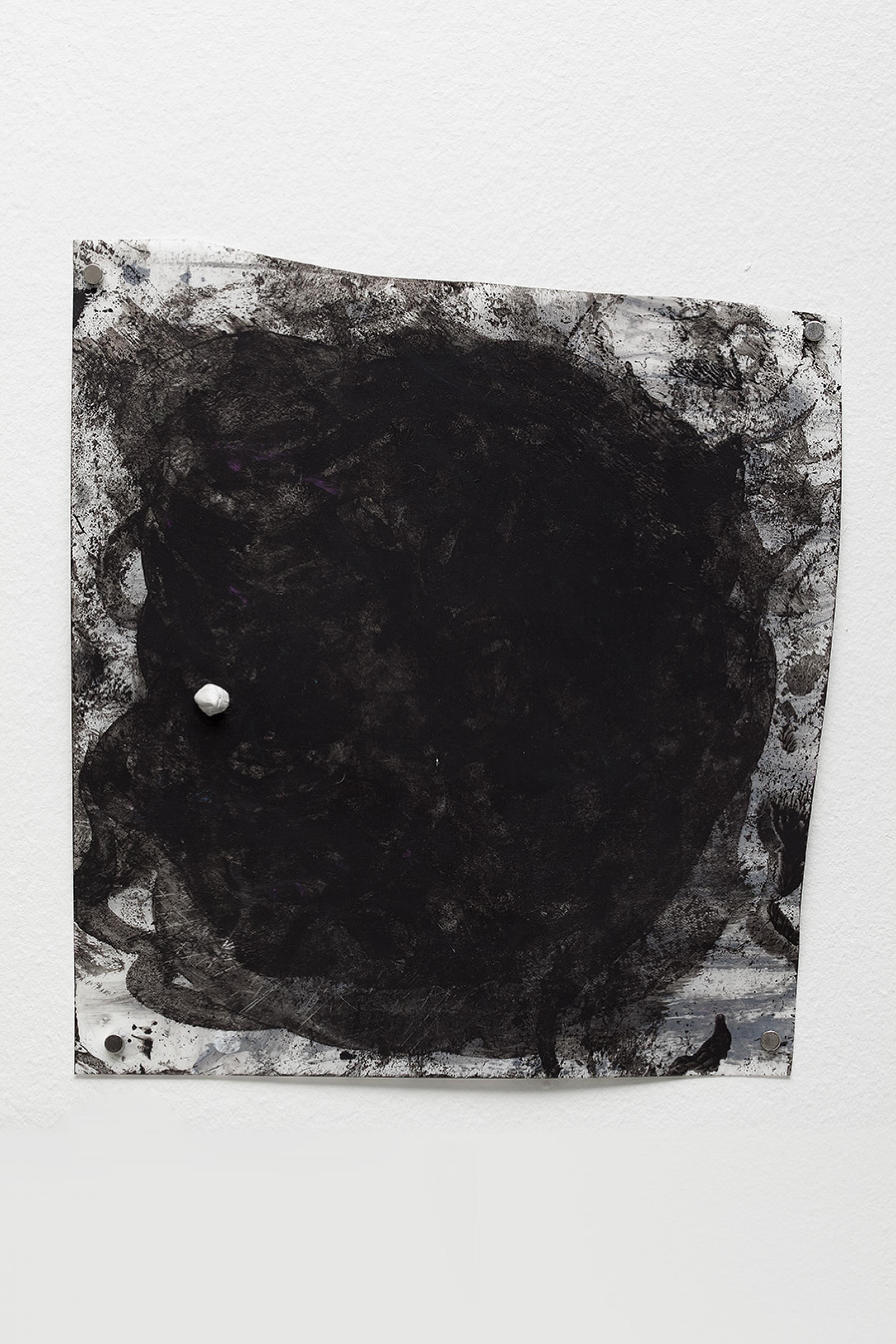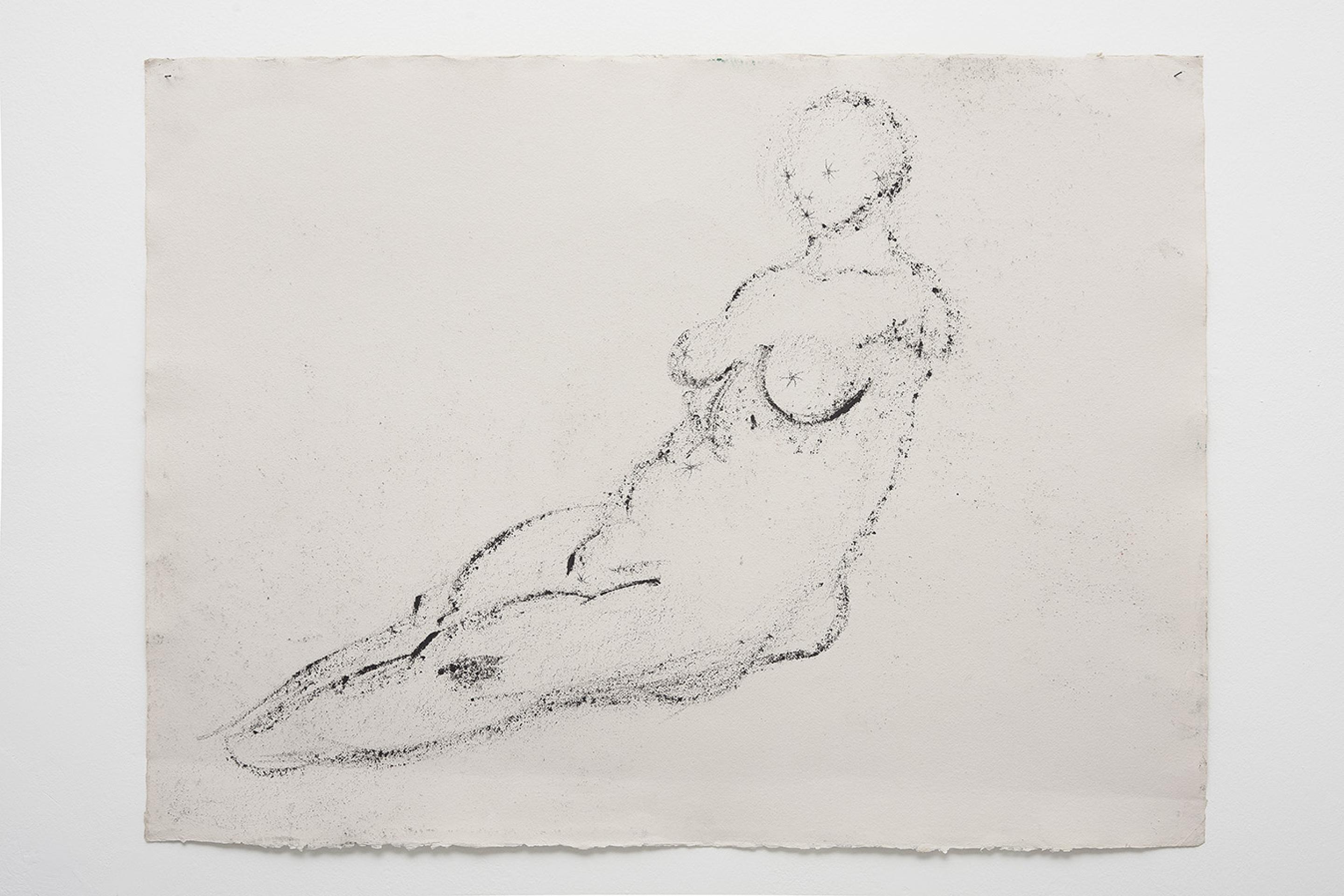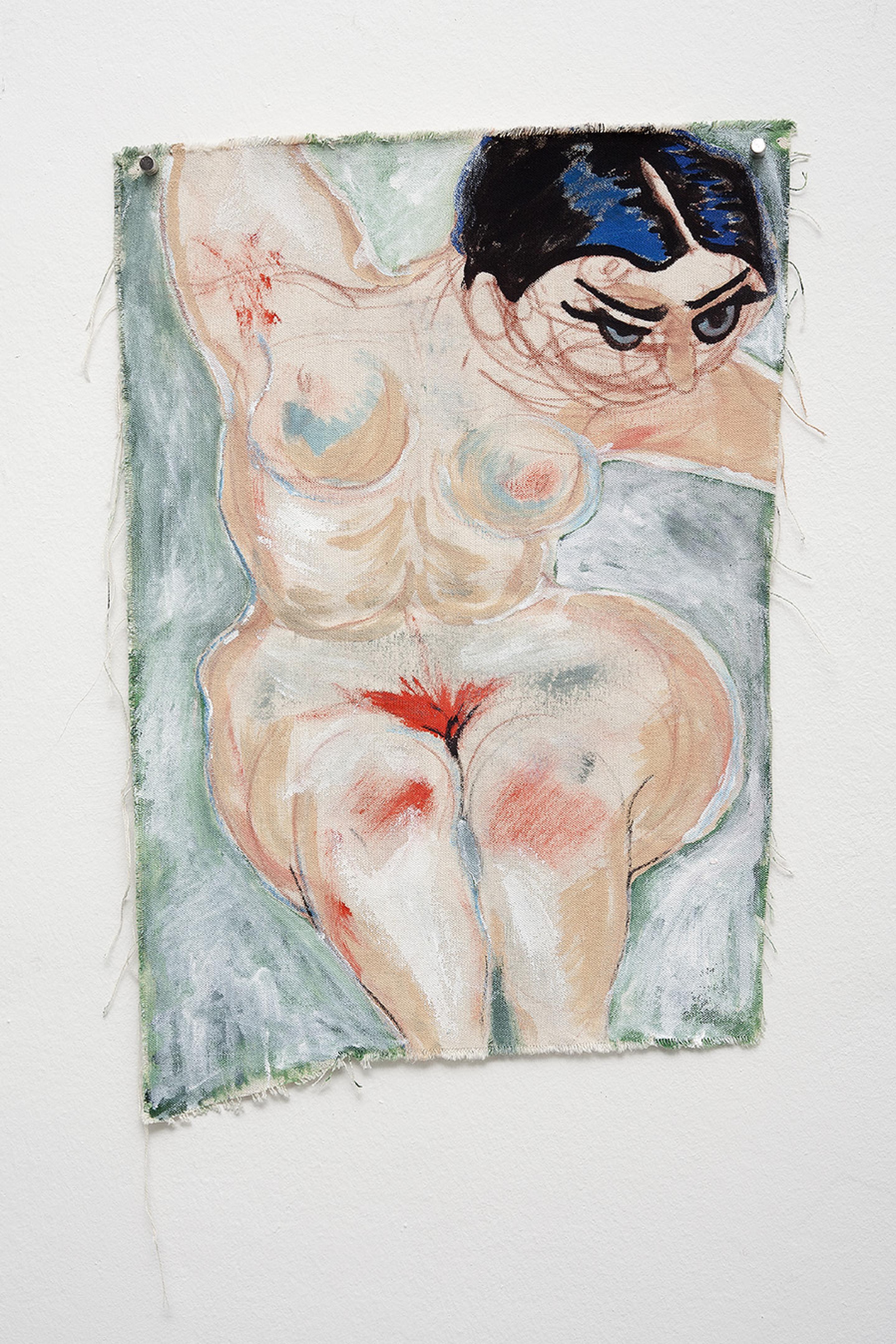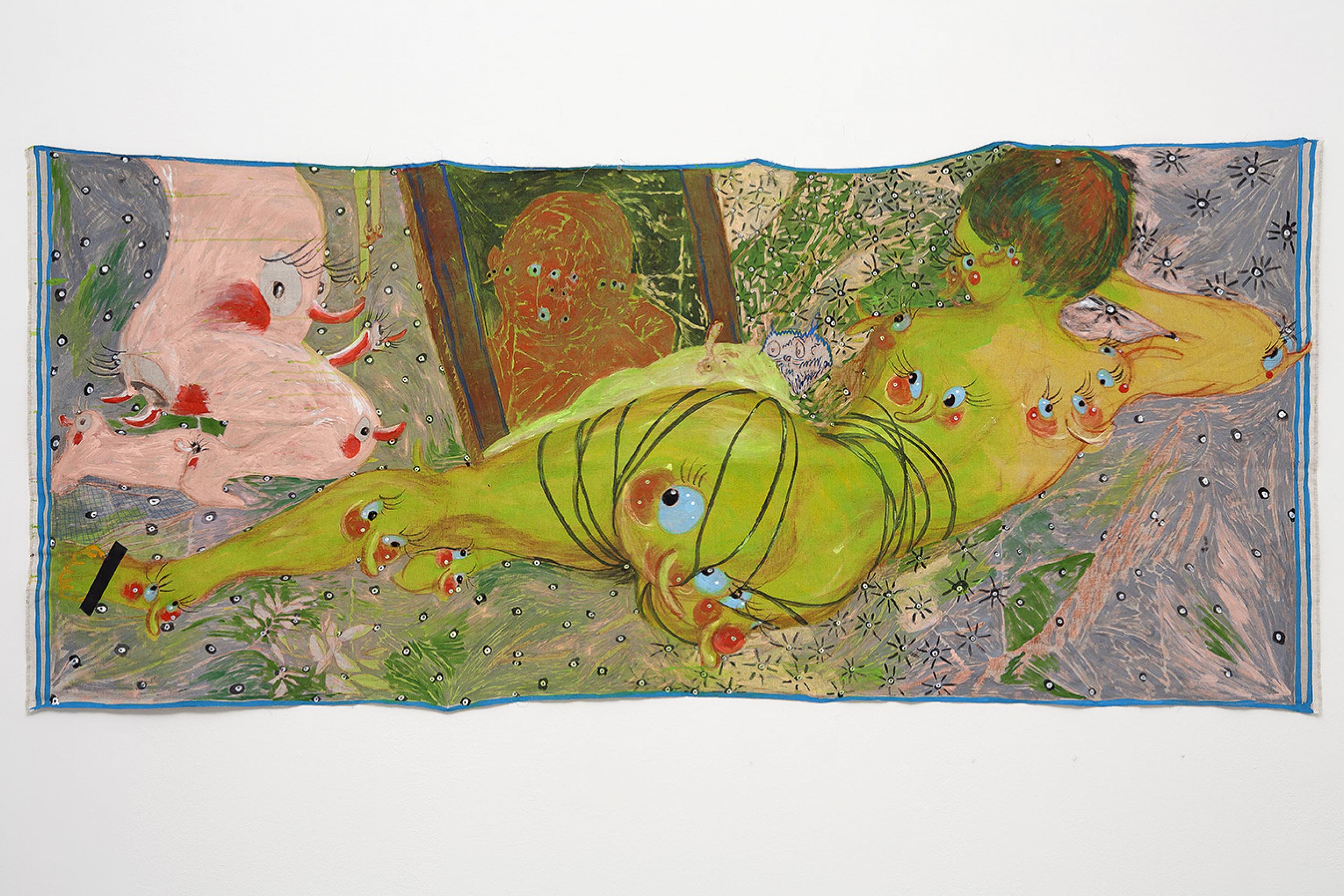DashaSHISHKIN
cats and potatoes
Gió Marconi, Milan
27.02.–03.04.2018
cats and potatoes
Gió Marconi, Milan
27.02.–03.04.2018
IT
Dasha Shishkin
cats and potatoes
Inaugurazione: martedì 27 febbraio, dalle 19 alle 21
28 febbraio – 03 aprile 2018
martedì – sabato, 11-19
Gió Marconi ha il piacere di annunciare la terza mostra personale con la galleria dell’artista russa di base a New York Dasha Shishkin.
La mostra di Gió Marconi è un salto stravagante e imprevedibile in un mondo tra il disegno e la pittura, dove le follie e i fallimenti della natura umana vengono eseguiti con colori vivaci e fantasia selvaggia. Shishkin crea un mondo fantastico popolato da una strana serie di personaggi.
I protagonisti delle sue opere sono colti in narrazioni intrecciate e attività deliberate che offrono allo spettatore uno sguardo su una realtà strana eppure significativa.
I lavori di Shishkin sono di diversa natura. Le sue tecniche variano: l’artista utilizza alternativamente acrilico, pastello, inchiostro, matita e ama lavorare con materiali non convenzionali come tele strappate e nastri.
In mostra sono presentati lavori su mylar, tela, carta e legno.
Shishkin esegue le sue complesse composizioni attraverso la sua caratteristica economia della linea, abbinata all’utilizzo di vivaci campi cromatici e pattern complessi: la sua tavolozza audace e l’uso di pois, griglie colorate e altri schemi resi dalla biologia, confondono i confini tra i singoli corpi, l’aria e gli oggetti circostanti. Sebbene a prima vista sono i colori a dominare le sue opere, è fondamentalmente la linea a definire lo spazio e la composizione vivenendo la forza trainante nel lavoro dell’artista. Le sue opere ricche di colori insieme allo stile decorativo inizialmente impediscono all’osservatore di percepire che il soggetto è fantastico, erotico, macabro, melanconico e il più delle volte violento. Una realtà sconvolgente si cela sotto l’immaginazione.
Le storie dell’artista non sono facili da decodificare. Dasha Shishkin è un’eccellente storyteller che presenta scene sovraccaricate sensorialmente dove coglie erotismo e violenza ma anche umorismo.
Uno strumento che Shishkin ama utilizzare per rendere ancora più criptici i messaggi delle sue opere è il linguaggio dei titoli: “I titoli sono come la ciliegina sulla torta. La ciliegina non fa si che la torta diventi una torta alla ciliegia, ma è lì per attrarre un occhio distratto”.
Da Giò Marconi, la parete d’ingresso della mostra presenta un gruppo di dipinti e disegni di diverse dimensioni. Sebbene ciascun pezzo sia un'opera d'arte indipendente, le diverse immagini si relazionano stilisticamente l'una con l'altra e la lunga parete sembra narrare una storia: misurati disegni a carboncino di nudi femminili reclinati e ritratti di cani in bianco e nero sono giustapposti a dipinti colorati e riccamente decorati. In “The Happy House” un piccolo voluttuoso nudo con luminosi occhi blu e capelli nero corvino sembra emergere da un sfondo verdastro freddo come il ghiaccio. Una figura femminile dal naso lungo è esposta accanto a una madre distesa vicino al suo bambino. Un piccolo cane nero in attesa è disteso su una coperta verde a scacchi mentre numerosi funghi rossi e bianchi popolano il terreno di una scialba foresta grigia con fitti tronchi d'albero. In “Myth of Animal Consent” Shishkin rende omaggio alla famosa "Venere Rokeby" di Diego Velzquez’. Ironicamente l'artista dota il nudo di una moltitudine di volti ammiccanti con occhi azzurri, guance rosse, lunghi nasi.
L'artista ha dichiarato: “In alcuni disegni ho portato avanti l'idea di "e se ogni parte del corpo fosse una singola persona", quindi le ginocchia, i seni, i piedi hanno occhi e nasi e labbra e, potenzialmente cervelli. Quindi le immagini non rappresentano un singolo soggetto ma diventano un ritratto di gruppo. Io non credo che queste siano immagini di fantasia sono più che altro un "e se questa ipotesi fosse vera"... Io non voglio mettere l'accento sulla giustapposizione tra qualcosa di non divertente definito come tale ma più che altro sul fatto che la nostra percezione è solo questo: percezione. Un volto cupo può essere semplicemente un' espressione di riposo e non un segno di dolore".
Una sottile linea blu scorre sul fondo delle pareti della galleria per tutta la mostra come un filo, collegando così l'inizio alla fine e sottolineando l'idea dell'elemento narrativo.
Dasha Shishkin (n. 1977, Mosca, Russia) vive e lavora a Brooklyn, New York.
La carriera di Shishkin è iniziata con la celebre mostra "The Compulsive Line: Etching 1900 to Now" al MoMA nel 2006 in cui il suo lavoro è stato esposto insieme a quello di artisti come David Hockney, Marcel Dzama, Jake e Dinos Chapman, David Shrigley, ecc. I suoi lavori sono stati presentati internazionalmente in diverse esposizioni collettive e personali tra cui: “Tram Pam Pam”, Boulder Museum of Contemporary Art, Boulder
(2017); “Imaginary Portraits of Prince Igor”, the Gallery Met, The Metropolitan Opera, New York (2014); “One Torino: Shit and Die”, Palazzo Cavour, Torino (2014); “erry icket”, Museum of Contemporary Art Santa Barbara, Santa Barbara (2013); “I Surrender, Dear”, Contemporary Arts Center, Cincinnati (2012); “Gaiety is the most outstanding feature of
the Soviet Union: Art from Russia”, Saatchi Gallery, Londra (2012); “Monanism”, Museum of Old and New Art, Tasmania (2011); “Living with Art: Collecting Contemporary in Metro New York”, Neuberger Museum of Art in Purchase, New York (2010); “Embrace”, Denver Art Museum, Denver (2009); “World Receiver”, Hamburger Kunsthalle, Amburgo (2007).
Le sue opere sono conservate in importanti collezioni internazionali tra le quali: Museum of Modern Art, New York; Whitney Museum of American Art, New York; Dallas Museum of Art, Dallas; Columbus Museum of Art, Columbus; Pinakothek der Moderne, Monaco di Baviera e Hamburger Kunsthalle, Amburgo.
cats and potatoes
Inaugurazione: martedì 27 febbraio, dalle 19 alle 21
28 febbraio – 03 aprile 2018
martedì – sabato, 11-19
Gió Marconi ha il piacere di annunciare la terza mostra personale con la galleria dell’artista russa di base a New York Dasha Shishkin.
La mostra di Gió Marconi è un salto stravagante e imprevedibile in un mondo tra il disegno e la pittura, dove le follie e i fallimenti della natura umana vengono eseguiti con colori vivaci e fantasia selvaggia. Shishkin crea un mondo fantastico popolato da una strana serie di personaggi.
I protagonisti delle sue opere sono colti in narrazioni intrecciate e attività deliberate che offrono allo spettatore uno sguardo su una realtà strana eppure significativa.
I lavori di Shishkin sono di diversa natura. Le sue tecniche variano: l’artista utilizza alternativamente acrilico, pastello, inchiostro, matita e ama lavorare con materiali non convenzionali come tele strappate e nastri.
In mostra sono presentati lavori su mylar, tela, carta e legno.
Shishkin esegue le sue complesse composizioni attraverso la sua caratteristica economia della linea, abbinata all’utilizzo di vivaci campi cromatici e pattern complessi: la sua tavolozza audace e l’uso di pois, griglie colorate e altri schemi resi dalla biologia, confondono i confini tra i singoli corpi, l’aria e gli oggetti circostanti. Sebbene a prima vista sono i colori a dominare le sue opere, è fondamentalmente la linea a definire lo spazio e la composizione vivenendo la forza trainante nel lavoro dell’artista. Le sue opere ricche di colori insieme allo stile decorativo inizialmente impediscono all’osservatore di percepire che il soggetto è fantastico, erotico, macabro, melanconico e il più delle volte violento. Una realtà sconvolgente si cela sotto l’immaginazione.
Le storie dell’artista non sono facili da decodificare. Dasha Shishkin è un’eccellente storyteller che presenta scene sovraccaricate sensorialmente dove coglie erotismo e violenza ma anche umorismo.
Uno strumento che Shishkin ama utilizzare per rendere ancora più criptici i messaggi delle sue opere è il linguaggio dei titoli: “I titoli sono come la ciliegina sulla torta. La ciliegina non fa si che la torta diventi una torta alla ciliegia, ma è lì per attrarre un occhio distratto”.
Da Giò Marconi, la parete d’ingresso della mostra presenta un gruppo di dipinti e disegni di diverse dimensioni. Sebbene ciascun pezzo sia un'opera d'arte indipendente, le diverse immagini si relazionano stilisticamente l'una con l'altra e la lunga parete sembra narrare una storia: misurati disegni a carboncino di nudi femminili reclinati e ritratti di cani in bianco e nero sono giustapposti a dipinti colorati e riccamente decorati. In “The Happy House” un piccolo voluttuoso nudo con luminosi occhi blu e capelli nero corvino sembra emergere da un sfondo verdastro freddo come il ghiaccio. Una figura femminile dal naso lungo è esposta accanto a una madre distesa vicino al suo bambino. Un piccolo cane nero in attesa è disteso su una coperta verde a scacchi mentre numerosi funghi rossi e bianchi popolano il terreno di una scialba foresta grigia con fitti tronchi d'albero. In “Myth of Animal Consent” Shishkin rende omaggio alla famosa "Venere Rokeby" di Diego Velzquez’. Ironicamente l'artista dota il nudo di una moltitudine di volti ammiccanti con occhi azzurri, guance rosse, lunghi nasi.
L'artista ha dichiarato: “In alcuni disegni ho portato avanti l'idea di "e se ogni parte del corpo fosse una singola persona", quindi le ginocchia, i seni, i piedi hanno occhi e nasi e labbra e, potenzialmente cervelli. Quindi le immagini non rappresentano un singolo soggetto ma diventano un ritratto di gruppo. Io non credo che queste siano immagini di fantasia sono più che altro un "e se questa ipotesi fosse vera"... Io non voglio mettere l'accento sulla giustapposizione tra qualcosa di non divertente definito come tale ma più che altro sul fatto che la nostra percezione è solo questo: percezione. Un volto cupo può essere semplicemente un' espressione di riposo e non un segno di dolore".
Una sottile linea blu scorre sul fondo delle pareti della galleria per tutta la mostra come un filo, collegando così l'inizio alla fine e sottolineando l'idea dell'elemento narrativo.
Dasha Shishkin (n. 1977, Mosca, Russia) vive e lavora a Brooklyn, New York.
La carriera di Shishkin è iniziata con la celebre mostra "The Compulsive Line: Etching 1900 to Now" al MoMA nel 2006 in cui il suo lavoro è stato esposto insieme a quello di artisti come David Hockney, Marcel Dzama, Jake e Dinos Chapman, David Shrigley, ecc. I suoi lavori sono stati presentati internazionalmente in diverse esposizioni collettive e personali tra cui: “Tram Pam Pam”, Boulder Museum of Contemporary Art, Boulder
(2017); “Imaginary Portraits of Prince Igor”, the Gallery Met, The Metropolitan Opera, New York (2014); “One Torino: Shit and Die”, Palazzo Cavour, Torino (2014); “erry icket”, Museum of Contemporary Art Santa Barbara, Santa Barbara (2013); “I Surrender, Dear”, Contemporary Arts Center, Cincinnati (2012); “Gaiety is the most outstanding feature of
the Soviet Union: Art from Russia”, Saatchi Gallery, Londra (2012); “Monanism”, Museum of Old and New Art, Tasmania (2011); “Living with Art: Collecting Contemporary in Metro New York”, Neuberger Museum of Art in Purchase, New York (2010); “Embrace”, Denver Art Museum, Denver (2009); “World Receiver”, Hamburger Kunsthalle, Amburgo (2007).
Le sue opere sono conservate in importanti collezioni internazionali tra le quali: Museum of Modern Art, New York; Whitney Museum of American Art, New York; Dallas Museum of Art, Dallas; Columbus Museum of Art, Columbus; Pinakothek der Moderne, Monaco di Baviera e Hamburger Kunsthalle, Amburgo.
EN
Dasha Shishkin
cats and potatoes
Opening Tuesday, February 27, 2018; 7pm - 9pm
February 27 - April, 2018
From Tuesday to Saturday, 11am - 7pm
Gió Marconi is very pleased to announce the third solo exhibition with the gallery by Russian-born and New York-based artist Dasha Shishkin.
The exhibition at Gió Marconi is a whimsical and unpredictable leap into a world between drawing and painting where the follies and failings of human nature are performed in vivid colour and with a wild imagination. Shishkin creates a fantastical world populated by an odd set of characters. They are engaged in intertwined narratives and deliberate activities that offer the viewer a glimpse into a strange yet purposeful reality.
Shishkin’s works are very diverse in nature. Her techniques vary: she alternately uses acrylics, pastels, inks and graphites and likes to employ unconventional materials, such as ripped canvas or painters tape. In the exhibition both works on mylar, canvas, paper and wood are on display.
Shishkin executes her complex compositions by using her characteristic economy of line, coupled with her use of bright blocks of colour and elaborate patterning: her bold palette and use of polka dots, colourful grids and other organic patterns blur the boundaries between individual bodies, the air, and the surrounding objects in her drawings. Although colours at first dominate her compositions, line ultimately informs the space and composition of the artist’s work and becomes the driving force. Her colourful works and rather decorative style initially prevent the viewer from seeing that the subject matter is fantastical, erotic, macabre, melancholic and more often than not violent. An unsettling reality lies beneath the imagery.
Shishkinʼs stories are not easy to decode. She is a big storyteller who depicts scenes of sensory overload in which eroticism and violence but also humor are captured. A tool that Shishkin likes to apply to further encrypt the messages of her works is the use of language in her titles: “Titles are like a cherry on a cake. The cherry does not make a cake a cherry cake, but it is still there to attract or distract an eye.
At Gió Marconi, the entrance wall of the exhibition shows a group of differently sized paintings and drawings. Although each work is an independent work of art, the various images relate to each other stylistically and the long wall seems to narrate a story: demure charcoal drawings of reclining nude female figures and black and white portraits of dogs are being juxtaposed with Shishkin’s colourful and richly patterned paintings. In “The Happy House” a small voluptuous nude with bright blue eyes and jet-black hair seems to step out of a seemingly ice-cold greenish background. A long-nosed female face is shown next to a recumbent mother and child. An expectantly looking little black dog is reclining onto a green checked blanket while numerous red and white dotted fly agarics populate the ground in a pale grey forest with thick tree trunks. In “Myth of Animal Consent” Shishkin pays homage to Diego Velazquez’ famous “Rokeby Venus”. But she ironically endues her nude with a multitude of blue-eyed, red-cheeked and long-nosed smirking faces.
The artist acknowledges, that “in some drawings I continued the idea of "what if every body part was a separate person", so the knees, breasts, feet have eyes and noses and mouths and, potentially, brains. So the pictures become not a single portrait but a group portrait. I don't think that these pictures are fantastical, they are more of a "what if this is true now" scenario… I did not want to make an accent on the juxtaposition of something not-cheerful called cheerful but more about the fact that our perception is just that, a perception. Somebody's gloomy visage can be their resting face and not a sign of some grief.”
A thin blue line at the bottom of the gallery walls runs like a thread throughout the exhibition, thereby connecting the beginning with the end and underlining the idea of the narrative element.
Dasha Shishkin (b. 1977, Moscow, Russia) lives and works in Brooklyn, New York.
Shishkin career initiated with the widely known exhibition "The Compulsive Line: Etching 1900 to Now” at the MoMA in 2006 in which she was to be seen among the likes of David Hockney, Marcel Dzama, Jake and Dinos Chapman, David Shrigley etc.
She has been featured in solo and group exhibitions internationally at institutions including: “Tram Pam Pam”, Boulder Museum of Contemporary Art, Boulder (2017); “Imaginary Portraits of Prince Igor”, the Gallery Met, The Metropolitan Opera, New York (2014); “One Torino: Shit and Die”, Palazzo Cavour, Torino (2014); “erry icket”, Museum of Contemporary Art Santa Barbara, Santa Barbara (2013); “I Surrender, Dear”, Contemporary Arts Center, Cincinnati (2012); “Gaiety is the most outstanding feature of the Soviet Union: Art from Russia”, Saatchi Gallery, London (2012); “Monanism”, Museum of Old and New Art, Tasmania (2011); “Living with Art: Collecting Contemporary in Metro New York”, Neuberger Museum of Art in Purchase, New York (2010); “Embrace”, Denver Art Museum, Denver (2009); “World Receiver”, Hamburger Kunsthalle, Hamburg (2007).
She is represented in the collections of the Museum of Modern Art, New York; Whitney Museum of American Art, New York; Dallas Museum of Art, Dallas; Columbus Museum of Art, Columbus; Pinakothek der Moderne, Munich; and Hamburger Kunsthalle, Hamburg.
cats and potatoes
Opening Tuesday, February 27, 2018; 7pm - 9pm
February 27 - April, 2018
From Tuesday to Saturday, 11am - 7pm
Gió Marconi is very pleased to announce the third solo exhibition with the gallery by Russian-born and New York-based artist Dasha Shishkin.
The exhibition at Gió Marconi is a whimsical and unpredictable leap into a world between drawing and painting where the follies and failings of human nature are performed in vivid colour and with a wild imagination. Shishkin creates a fantastical world populated by an odd set of characters. They are engaged in intertwined narratives and deliberate activities that offer the viewer a glimpse into a strange yet purposeful reality.
Shishkin’s works are very diverse in nature. Her techniques vary: she alternately uses acrylics, pastels, inks and graphites and likes to employ unconventional materials, such as ripped canvas or painters tape. In the exhibition both works on mylar, canvas, paper and wood are on display.
Shishkin executes her complex compositions by using her characteristic economy of line, coupled with her use of bright blocks of colour and elaborate patterning: her bold palette and use of polka dots, colourful grids and other organic patterns blur the boundaries between individual bodies, the air, and the surrounding objects in her drawings. Although colours at first dominate her compositions, line ultimately informs the space and composition of the artist’s work and becomes the driving force. Her colourful works and rather decorative style initially prevent the viewer from seeing that the subject matter is fantastical, erotic, macabre, melancholic and more often than not violent. An unsettling reality lies beneath the imagery.
Shishkinʼs stories are not easy to decode. She is a big storyteller who depicts scenes of sensory overload in which eroticism and violence but also humor are captured. A tool that Shishkin likes to apply to further encrypt the messages of her works is the use of language in her titles: “Titles are like a cherry on a cake. The cherry does not make a cake a cherry cake, but it is still there to attract or distract an eye.
At Gió Marconi, the entrance wall of the exhibition shows a group of differently sized paintings and drawings. Although each work is an independent work of art, the various images relate to each other stylistically and the long wall seems to narrate a story: demure charcoal drawings of reclining nude female figures and black and white portraits of dogs are being juxtaposed with Shishkin’s colourful and richly patterned paintings. In “The Happy House” a small voluptuous nude with bright blue eyes and jet-black hair seems to step out of a seemingly ice-cold greenish background. A long-nosed female face is shown next to a recumbent mother and child. An expectantly looking little black dog is reclining onto a green checked blanket while numerous red and white dotted fly agarics populate the ground in a pale grey forest with thick tree trunks. In “Myth of Animal Consent” Shishkin pays homage to Diego Velazquez’ famous “Rokeby Venus”. But she ironically endues her nude with a multitude of blue-eyed, red-cheeked and long-nosed smirking faces.
The artist acknowledges, that “in some drawings I continued the idea of "what if every body part was a separate person", so the knees, breasts, feet have eyes and noses and mouths and, potentially, brains. So the pictures become not a single portrait but a group portrait. I don't think that these pictures are fantastical, they are more of a "what if this is true now" scenario… I did not want to make an accent on the juxtaposition of something not-cheerful called cheerful but more about the fact that our perception is just that, a perception. Somebody's gloomy visage can be their resting face and not a sign of some grief.”
A thin blue line at the bottom of the gallery walls runs like a thread throughout the exhibition, thereby connecting the beginning with the end and underlining the idea of the narrative element.
Dasha Shishkin (b. 1977, Moscow, Russia) lives and works in Brooklyn, New York.
Shishkin career initiated with the widely known exhibition "The Compulsive Line: Etching 1900 to Now” at the MoMA in 2006 in which she was to be seen among the likes of David Hockney, Marcel Dzama, Jake and Dinos Chapman, David Shrigley etc.
She has been featured in solo and group exhibitions internationally at institutions including: “Tram Pam Pam”, Boulder Museum of Contemporary Art, Boulder (2017); “Imaginary Portraits of Prince Igor”, the Gallery Met, The Metropolitan Opera, New York (2014); “One Torino: Shit and Die”, Palazzo Cavour, Torino (2014); “erry icket”, Museum of Contemporary Art Santa Barbara, Santa Barbara (2013); “I Surrender, Dear”, Contemporary Arts Center, Cincinnati (2012); “Gaiety is the most outstanding feature of the Soviet Union: Art from Russia”, Saatchi Gallery, London (2012); “Monanism”, Museum of Old and New Art, Tasmania (2011); “Living with Art: Collecting Contemporary in Metro New York”, Neuberger Museum of Art in Purchase, New York (2010); “Embrace”, Denver Art Museum, Denver (2009); “World Receiver”, Hamburger Kunsthalle, Hamburg (2007).
She is represented in the collections of the Museum of Modern Art, New York; Whitney Museum of American Art, New York; Dallas Museum of Art, Dallas; Columbus Museum of Art, Columbus; Pinakothek der Moderne, Munich; and Hamburger Kunsthalle, Hamburg.
